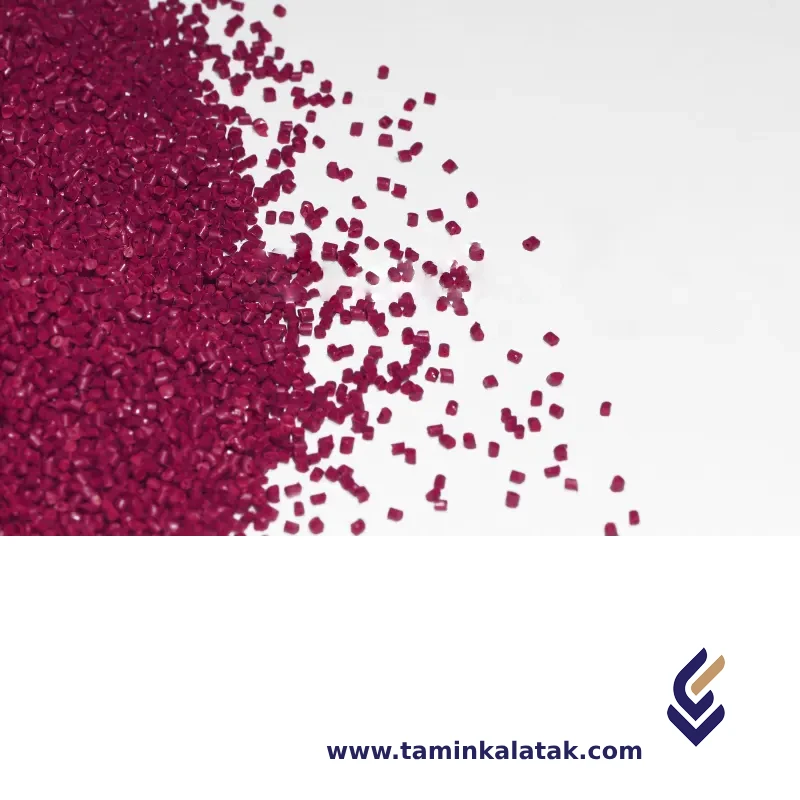Polymers are made up of very large molecules made up of many repeating units called monomers, which ultimately form this long polymer chain
Plasticizers are chemical additives added to polymers to increase their flexibility, ductility, and processability.
Hostaform
Hostaform is a brand name for polyoxymethylene (POM), also known as acetal or Delrin (a common trade name). It is an advanced engineering thermoplastic that is widely used in various industries for its exceptional mechanical properties, making it suitable for demanding applications.
Structure
Hostaform, or polyoxymethylene (POM), has a repeating structure composed of formaldehyde units, which are linked together through methylene (-CH2-) groups. The polymer’s backbone consists of alternating ether groups (-O-) and methylene (-CH2-) groups, forming a crystalline structure. This linear structure contributes to its high crystallinity, which gives Hostaform its exceptional mechanical properties such as strength, stiffness, and dimensional stability. The rigid molecular structure is responsible for its low friction and wear resistance, making it ideal for engineering applications that require durable materials. The polymer’s chain structure also contributes to its resistance to chemical degradation and thermal stability, allowing it to perform well in harsh conditions.
Properties
Hostaform, or polyoxymethylene (POM), is a high-performance polymer known for its outstanding mechanical and physical properties. It has excellent tensile strength, high rigidity, and toughness, which make it suitable for demanding engineering applications. The polymer exhibits low friction and wear resistance, making it ideal for parts such as gears, bearings, and bushings that are subject to constant motion. Hostaform also boasts high dimensional stability, meaning it maintains its shape and size even under varying temperature and humidity conditions. It has good chemical resistance, withstanding exposure to oils, fuels, and solvents, which makes it valuable for use in automotive and industrial environments. Additionally, Hostaform retains its strength at elevated temperatures, as it has a relatively high melting point. Its ability to act as an electrical insulator further enhances its versatility in electronics and electrical applications. The polymer can be easily processed using standard methods like injection molding, allowing for the production of precise, high-quality parts.
Applications of Hostaform (POM)
- Automotive components (e.g., fuel system parts, bearings, gears, bushings)
- Precision mechanical parts (e.g., pumps, valves, and sliders)
- Electrical connectors and components
- Consumer goods (e.g., latches, handles, appliance parts)
- Industrial equipment (e.g., gears and seals)
Advantages of Hostaform (POM)
- High tensile strength and rigidity, ideal for demanding engineering applications
- Low friction and wear resistance, suitable for moving parts
- Excellent dimensional stability, even under high temperature and mechanical stress
- Good chemical resistance to oils, fuels, and solvents
- Effective electrical insulation properties
- Easy to process using standard molding techniques (e.g., injection molding)
- High durability and long-lasting performance in various applications
Disadvantages of Hostaform (POM)
- Relatively high cost compared to other polymers
- Limited resistance to strong acids and bases
- Susceptible to degradation when exposed to UV light over time
- Can become brittle in low-temperature environments, limiting impact resistance
Applications
| Applications | , , , , |
|---|
Hostaform
| Products | MFI (g/10 min) | Density (g/Cm³) | Applications | Process method | Data Sheet | MSDS |
|---|---|---|---|---|---|---|
| Hostaform | 1-50 | 1.41-1.43 | Fuel system components, gears, bearings, bushings, pumps, valves, seals, conveyor systems, latches, handles | Injection Molding Extrusion Compression Molding Machining |







